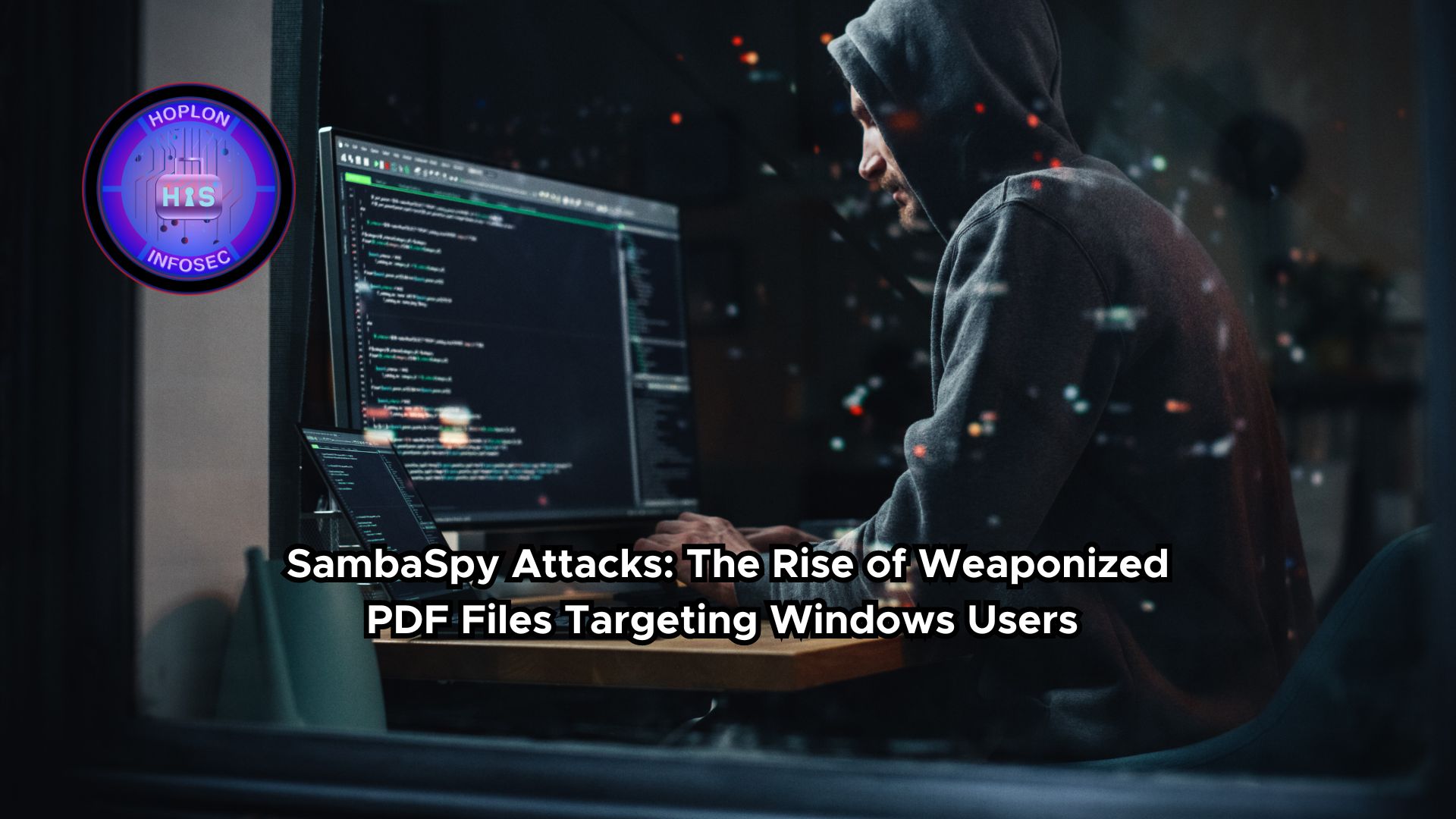In the ever-evolving landscape of cybersecurity threats, the recent discovery of the SambaSpy campaign highlights the increasing sophistication of attacks using weaponized PDF files. These malicious documents are not just a passing trend; they have become a favored method for cybercriminals looking to exploit vulnerabilities and infiltrate systems, particularly in targeted phishing schemes.
The Nature of Weaponized PDF Files
Weaponized PDF files are malicious documents that contain embedded code, links, and scripts designed to exploit weaknesses in PDF readers. By taking advantage of these vulnerabilities, attackers can bypass traditional security measures, making PDF files a particularly insidious threat.
Why PDFs?
PDFs are widely used for sharing documents, which increases the likelihood that users will open them without hesitation. Their ability to embed various forms of content allows attackers to create seemingly legitimate files that mask their malicious intent. This has made them a preferred tool for delivering malware.
SambaSpy: An Overview
In May 2024, researchers from Kaspersky Lab uncovered a targeted malware campaign named SambaSpy, which specifically focused on Windows users in Italy. This campaign utilized a highly sophisticated infection chain that began with phishing emails designed to appear as if they were sent from a legitimate Italian real estate company.
Phishing Emails as the First Step
The initial attack vector involved phishing emails containing links that redirected victims through various legitimate sites before landing on malicious servers. This multi-stage approach not only masked the true nature of the attack but also ensured that only users who met specific criteria—such as language and browser type—would be targeted.
The Infection Chain
Step 1: Initial Contact
The phishing emails presented a fake invoice from a well-known Italian company, enticing victims to click the links. This clever tactic leverages trust and urgency, compelling users to act quickly without a second thought.
Step 2: Redirects and Language Checks
Victims were redirected through several legitimate websites, such as “FattureInCloud,” and ultimately to malicious servers using tools like “ngrok.” At each stage, the threat actors performed strict checks to confirm that the users were Italian speakers using specific browsers (Edge, Firefox, and Chrome). This level of targeting illustrates a high degree of planning and execution.
Step 3: Delivery of SambaSpy
The final payload, a Java-based Remote Access Trojan (RAT) called SambaSpy, was delivered via a JAR file hosted on MediaFire. Once executed, SambaSpy provided attackers with extensive capabilities for surveillance and control over the infected system.
Capabilities of SambaSpy
SambaSpy is a potent tool in the cybercriminal’s arsenal, equipped with an array of malicious features, including:
- File System Manipulation: Allows attackers to read, write, and delete files on the victim’s system.
- Process Management: Gives control over running processes, enabling further malicious actions.
- Keylogging: Utilizes JNativeHook to capture keystrokes and gather sensitive information.
- Clipboard Control: Monitors and manipulates the clipboard for credential theft.
- Webcam Access: Provides attackers with the ability to remotely activate the webcam.
- Screen Capture: Allows the capture of screenshots to gather visual data from the victim’s device.
- Remote Desktop Functionality: Enables complete control over the infected system.
- Browser Credential Theft: Specifically targets popular browsers such as Chrome, Edge, and Opera to harvest login information.
- Dynamic Plugin Loading: Utilizes Java’s URLClassLoader to load additional malicious plugins at runtime.
Evasion Techniques
SambaSpy employs advanced evasion techniques to avoid detection by security software. For instance, it incorporates anti-virtual machine (VM) techniques to evade analysis and operates stealthily to minimize the chances of being caught.
Language and Cultural Targeting
One of the most striking aspects of the SambaSpy campaign is its focused targeting strategy. By employing multiple language verification steps throughout the infection chain, the attackers demonstrated a clear intent to select victims based on linguistic and geographical criteria. This approach is indicative of a growing trend where attackers from specific regions target countries with linguistic similarities.
The Broader Implications
The emergence of SambaSpy serves as a wake-up call for cybersecurity professionals, especially Chief Information Security Officers (CISOs) who must stay abreast of evolving threats. The combination of sophisticated malware, targeted phishing schemes, and cultural elements presents a multifaceted challenge.
Evolving Threat Landscape
As cybercriminals continually refine their tactics, organizations must adapt their security strategies accordingly. Traditional defenses may no longer be sufficient to combat these nuanced attacks. Instead, a proactive and layered approach to cybersecurity is essential.
Mitigation Strategies
Organizations can take several steps to mitigate the risks posed by campaigns like SambaSpy:
- User Education: Regular training sessions for employees on recognizing phishing attempts and the dangers of weaponized PDFs.
- Email Filtering: Implementing robust email filtering systems that can detect and block malicious emails before they reach users.
- Endpoint Protection: Employing advanced endpoint protection solutions that can identify and neutralize threats like SambaSpy.
- Regular Updates: Ensuring that all software, especially PDF readers and browsers, are kept up to date with the latest security patches.
- Incident Response Plan: Developing a comprehensive incident response plan to quickly address any breaches that may occur.
Conclusion
The SambaSpy campaign is a stark reminder of the sophisticated tactics employed by modern cybercriminals. As weaponized PDF files become more prevalent, organizations must remain vigilant and proactive in their cybersecurity efforts. By understanding the intricacies of such attacks, companies can better prepare themselves to defend against this growing threat.
Frequently Asked Questions (FAQs)
What is a weaponized PDF file?
A weaponized PDF file is a malicious document that contains embedded code or scripts designed to exploit vulnerabilities in PDF readers, enabling attackers to deliver malware or execute malicious actions.
How does the SambaSpy malware work?
SambaSpy works by first delivering a phishing email containing a link to a malicious JAR file. Once executed, it provides the attacker with extensive control over the infected system, including capabilities for keylogging, file manipulation, and remote access.
Who are the primary targets of the SambaSpy campaign?
The SambaSpy campaign primarily targets Italian users, using language and browser-specific checks to ensure that only certain individuals are infected.
What can organizations do to protect themselves from such attacks?
Organizations should implement user education programs, robust email filtering, advanced endpoint protection, regular software updates, and a well-defined incident response plan to mitigate the risks posed by attacks like SambaSpy.
How do attackers typically deliver weaponized PDFs?
Attackers often deliver weaponized PDFs through phishing emails that appear legitimate, tricking victims into downloading or opening the malicious files.
References
Dutta, T. S. (2024, September 19). SambaSpy Attacking Windows Users With Weaponized PDF Files. Retrieved from Cyber Security News: https://cybersecuritynews.com/sambaspy-windows-users-weaponized-pdf/amp/
SambaSpy: a new remote access Trojan. (2024, September 19). Retrieved from Kaspersky daily: https://www.kaspersky.com/blog/new-exotic-rat-sambaspy/52179/




